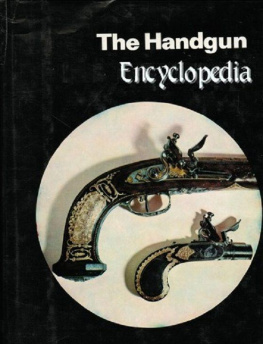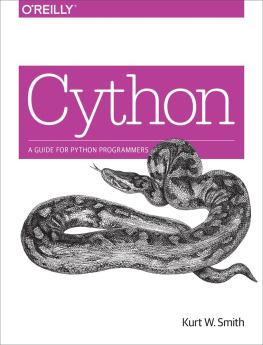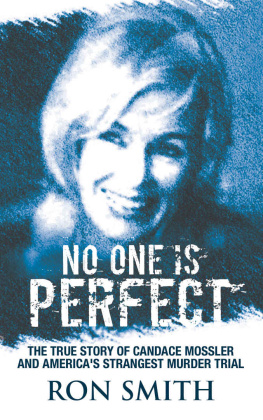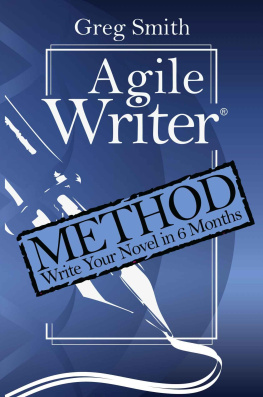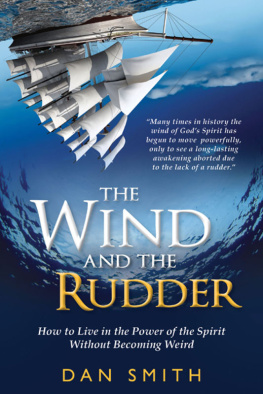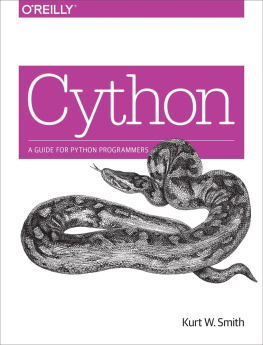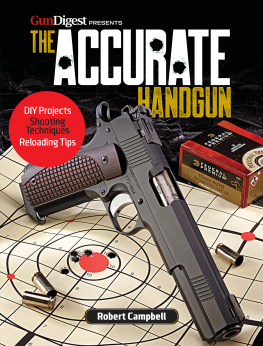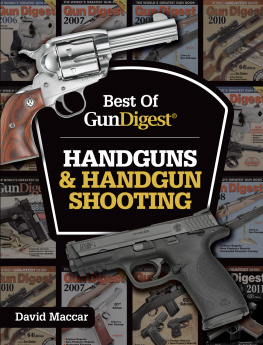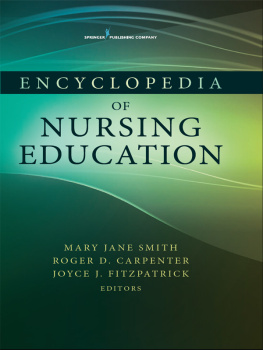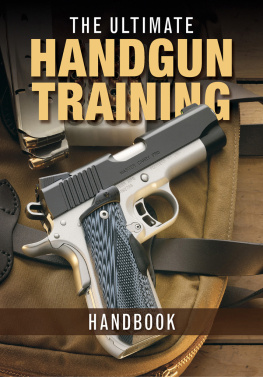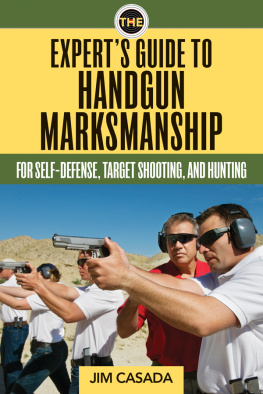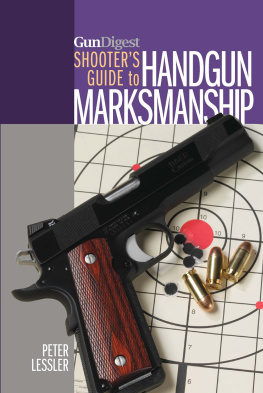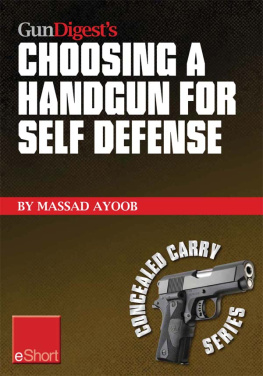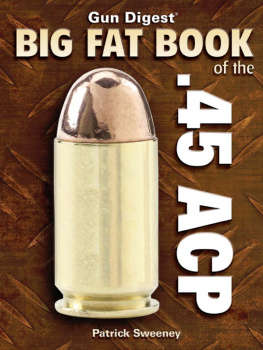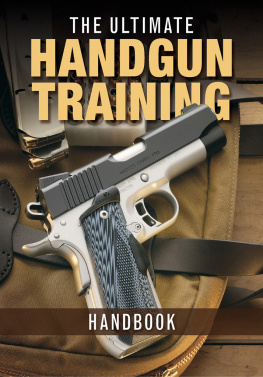Smith - The Handgun Encyclopedia
Here you can read online Smith - The Handgun Encyclopedia full text of the book (entire story) in english for free. Download pdf and epub, get meaning, cover and reviews about this ebook. year: 2013, genre: Science fiction. Description of the work, (preface) as well as reviews are available. Best literature library LitArk.com created for fans of good reading and offers a wide selection of genres:
Romance novel
Science fiction
Adventure
Detective
Science
History
Home and family
Prose
Art
Politics
Computer
Non-fiction
Religion
Business
Children
Humor
Choose a favorite category and find really read worthwhile books. Enjoy immersion in the world of imagination, feel the emotions of the characters or learn something new for yourself, make an fascinating discovery.
- Book:The Handgun Encyclopedia
- Author:
- Genre:
- Year:2013
- Rating:5 / 5
- Favourites:Add to favourites
- Your mark:
- 100
- 1
- 2
- 3
- 4
- 5
The Handgun Encyclopedia: summary, description and annotation
We offer to read an annotation, description, summary or preface (depends on what the author of the book "The Handgun Encyclopedia" wrote himself). If you haven't found the necessary information about the book — write in the comments, we will try to find it.
Smith: author's other books
Who wrote The Handgun Encyclopedia? Find out the surname, the name of the author of the book and a list of all author's works by series.
The Handgun Encyclopedia — read online for free the complete book (whole text) full work
Below is the text of the book, divided by pages. System saving the place of the last page read, allows you to conveniently read the book "The Handgun Encyclopedia" online for free, without having to search again every time where you left off. Put a bookmark, and you can go to the page where you finished reading at any time.
Font size:
Interval:
Bookmark:
The student of firearms must learn to live with a perverse, aggravating and, at times, totally inconsistent nomenclature. There is no short cut through the tangle, and the inadequacy of descriptive terms allied to a capricious and often illogical attempt at classification, tends to confuse and mystify the beginner. With experience, the terms are related to the context and to the period, so that, always with a wary eye open for synonyms, the serious student retires behind a protective barrier of jargonese, insulated from lesser mortals in much the same way as a lawyer, doctor or scientist. The study of firearms has suffered from the lack of a Linnaean system. We have inherited a terminology which, like Topsy, has just growed, and, to add to the problem, it is multi-lingual contrangelment where even the British and the Americans are separated by a common language.
A belief that at least some of the difficulties could be resolved in the present work was short-lived, but as evidence of good faith, if nothing else, a short list of common and currently used abbreviations is given which may provide some slight solace and remove one possible cause of confusion.
ACP Automatic Colt Pistol
AEP Anciens Etablissements Pieper
CF Centre-fire
DA Double Action
DWM Deutsche Waffen-und Munitionsfabriken
AG
FN Fabrique Nationale dArmes de Guerre SA ISU International Shooting Union (also UIT) IWK Industrie-Werke Karlsruhe AG
MAB Manufacture dArmes Automatiques,
Bayonne
MAC Manufacture dArmes de Chatellerault MAP Manufacture dArmes des Pyrenees MAS Manufacture dArmes de St. Etienne MAT Manufacture dArmes de Tulle
NP New Police
NRA National Rifle Association
NSRA National Small-bore Rifle Association OWG Oesterreichishe Werke-gws-Anstalt PF Pin-fire
RF Rim-fire
RFM Rim-fire Magnum
RIC Royal Irish Constabulary
RWS Rheinisch-Westfalische Sprengstoff-Adien
Gesellschaft
SA Single Action
SAA Single Action Army
SACM Societe Alsacienne de Constructions
Mecaniques
SAGEM Societe dApplications Generates Electri
ques et Mecaniques
SFM Societe Francaise des Munitions de Chasse.
de Tir et de Guerre
SIG Schweizerische Industrie Gesellschaft S&W Smith and Wesson
UIT Union Internationale de Tir (also ISU) WCF Winchester Centre-fire
WMR Winchester Magnum Rim-fire
WR Westley Richards
WRF Winchester Rim-fire
W&S Webley and Scott
The most remarkable feature regarding the invention of the detonating principle was that this discovery was made, not by a Manton, a Mortimer or indeed by any of the ingenious gunmakers of the first years of the nineteenth century, but by an obscure Scottish clergyman.
Some of the curious chemical family of initiatory explosives or exciting detonants had already been discovered when, on 13 March 1800, Edward Charles Howard reported to the Royal Society upon a new fulminating mercury he had discovered. A reference to fulminate of gold will be found in the unabridged edition of Pepys diary for 11 November 1663, and fulminate of silver had been made in France by Count Claude Louis Berthollet in 1788. Referring to the terrible properties of fulminate of silver, Nicholson wrote in 1795: When it has been once obtained it can no longer be touched. Mercury fulminate was safer to handle but even the intrepid Charles Howard was seriously injured during his researches into the mysteries of this irascible compound.
Another equally excitable family of compounds, the chlorates, received considerable attention during the eighteenth century. Potassium chlorate had been discovered by Berthollet in 1786, and he showed how it could be substituted for the saltpetre in gunpowder. A more powerful and violent explosive was obtained, but the manufacture presented problems and, as a propellant, its action was too violent and not amenable to control.
Whilst the chemists were investigating these choleric compounds and the gunmakers were continuing in their efforts to perfect and improve the flintlock, the Reverend Alexander John Forsyth was ministering to his flock and, in his leisure hours, amusing himself with scientific study and shooting wildfowl on the loch near the Manse of Belhelvie.
It was at the Manse, some eight miles north of Aberdeen, that Forsyth had been born on 28 December 1768. Educated at Kings College, Aberdeen, he graduated Master of Arts in 1786 and, having decided to enter the Church, he was licensed for the Ministry in 1790. Shortly afterwards his father died and the parish petitioned that the son should be presented with the living that the father had held for fifty-two years.
With his interest in chemistry and mechanics, and no doubt fully acquainted with the work that had been done in both France and England on detonating compounds, it is not surprising that Forsyth should have experimented with chemical means of speeding up the ignition of the powder charge in his fowling piece. The story goes that, when out fowling, Forsyth had missed many a bird because they were scared by the flash from the priming of his flintlock. A hood was fitted over the pan to hide the flash but, unsatisfied with this expedient, Forsyth went on to experiment with fulminate of mercury and potassium chlorate, first of all as propellants. Like others before him, he found that any slight advantages were more than outweighed by the hazards, so he then experimented with using detonating mixtures as priming. These mixtures could be ignited all right by the sparks from a flint, but often the priming failed to ignite the charge and all that resulted was a flash in the pan.
Further work showed that slightly better results were obtained when the detonating mixture was ignited by a blow, but success was not achieved until the detonating mixture was confined and the flame of ignition was directed into the powder charge.
These trials were carried out using an iron tube about 9 long provided with a touch-hole, adjacent to which was a cup containing the detonating powder. If the charge was wadded, even with a thin piece of paper, ignition occurred each time without fail.
By 1805 a successful gun lock had been made which Forsyth fitted to his fowling piece and used that season. In the spring of 1806 he took the gun with him to London where it was shown to Lord Moira, then Master General of Ordnance. At Lord Moiras invitation, Forsyth set up a workshop in the Tower of London and, having obtained leave from the Aberdeen Presbytery, he set to work to produce a robust lock suitable for use with either musket or cannon. Before he had fully completed his work, Moira was replaced by John Pitt, the second Earl of Chatham and brother to William Pitt the Younger. Chatham lacked many of his brothers qualities and he precipitately ordered Forsyth to take himself and all his rubbish from the Tower. Forsyth returned home in disgust and, on 11 April 1807, took out Patent No. 3032 for his invention. Since his invention had been rejected by the military, he then decided to try his luck elsewhere and accordingly, in 1808, set up in business at No. 10 Piccadilly, London. His assistant was James Purdey, who had been one of Mantons pupils and was later to become very famous on his own account. Forsyth remained actively connected with the business until 1819, when he returned to his parochial duties. At the same time the business was transferred to 8 Leicester St, Leicester Sq., and the firm continued to be listed as gunmakers until 1845.
The first commercially successful Forsyth lock was the well-known scent bottle type, introduced in 1808. The scent bottle lock or, as it was then known, the magazine lock, offered a number of important advantages. In an advertisement of the period it was claimed thatthere was rapid and complete inflammation of the whole of the charge of gunpowder, prevention of loss of force through the touch-hole and perfect security against rain or damp in the priming. No flash from the pan and less risk of accidental discharge. The latter claim was due to the fact that not only had the user the security of the half cock and the safety bolt but, in addition, the magazine could be put in such a position that even if the lock were cocked and the trigger pulled, the gun would not go off.
Font size:
Interval:
Bookmark:
Similar books «The Handgun Encyclopedia»
Look at similar books to The Handgun Encyclopedia. We have selected literature similar in name and meaning in the hope of providing readers with more options to find new, interesting, not yet read works.
Discussion, reviews of the book The Handgun Encyclopedia and just readers' own opinions. Leave your comments, write what you think about the work, its meaning or the main characters. Specify what exactly you liked and what you didn't like, and why you think so.

